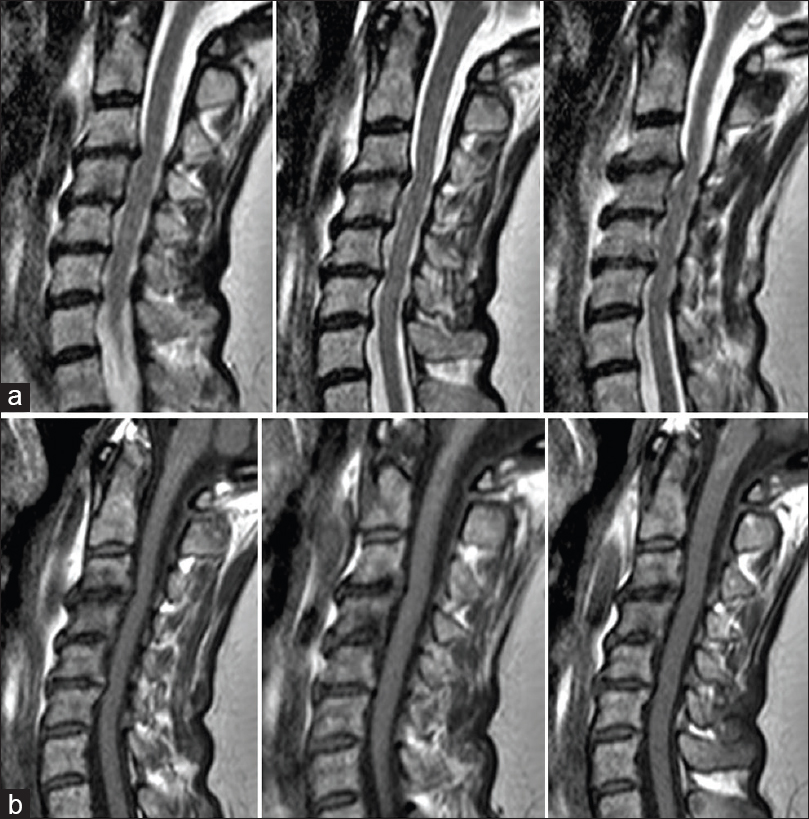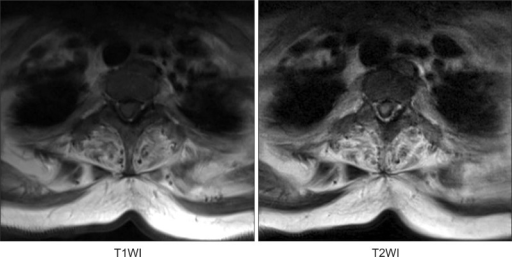Ouille! 35+ Vérités sur Thickening Of Ligamentum Flavum Mri: The elastin pulls the ligament out of the canal when the spine is extended.
Thickening Of Ligamentum Flavum Mri | It has resulted in tingling and numbness in both legs. To understand exact pathology of slip disc or low back ache. Ligamentum flavum thickening ligamentum flavum thickening describes a condition in which the spinal ligamentum flavum demonstrates degenerative or inflammatory changes that result in it swelling noticeably. Ligamentum flavum hypertrophy is also known as ligamentum flavum thickening. As the ligamentum flavum (lf) covers most of the posterolateral part of the lumbar spinal canal, its thickening can be attributed to the development of lumbar canal encroachment. With mri the condition can be verified by comparing the defected and. Related online courses on physioplus. Described disc degeneration and vertebral wedging acting as local factors that increase the tension of ligamentum flavum.12. Resonance imaging (mri) in an analytical study. Degenerative changes in posterior elements of the spine such as thickening or hypertrophy of the ligamentum flavum (lf) may result in methods: A total of 200 individuals with low back and/or leg pain complaints who had undergone lumbar mri were included in this study. A total of 200 individuals with low back and/or leg pain complaints who had undergone lumbar mri were included in this study. Measurements of ligamentum flavum thickening at lumbar spine using mri. Purpose to examine ligamentum flavum thickness using magnetic resonance (mr) images to evaluate its association with low back pain symptoms, age, gender, lumbar level, and disc characteristics. Assessment of traumatic brain injury online course: Thickening of ligamentum flavum (hypertrophy) can lead to varying degrees of symptoms such as neck pain, back pain, pain radiating down to the arms how is a ligamentum damage is diagnosed? Images usually demonstrate osteophytes, protruding intervertebral disc and a thickened ligamentum flavum. As discussed, this ligament passes from the anterior and inferior aspect of the the elastic fibers within the ligamentum flavum prevent it from buckling into the intervertebral foramen (ivf) and vertebral canal, thus sparing. What is ligamentum flavum hypertrophy? Ligamentum flavum hypertrophy which is also known by the name of ligamentum flavum thickening is a pathological condition of the spine in which in some cases, ligamentum flavum hypertrophy is identified when the mri is being done for other spinal issues like ruling in or out a disc. Related online courses on physioplus. Described disc degeneration and vertebral wedging acting as local factors that increase the tension of ligamentum flavum.12. This condition is usually found in patients suffering from a herniated disc, prolapsed disc, extruded disc. Ligamentum flavum) are paired ligaments which run between details: Ligamentum flavum is placed in the vertebral canal anterior to the spines of vertebrae and laminae of the vertebrae. A magnetic resonance imaging study. A total of 200 individuals with low back and/or leg pain complaints who had undergone lumbar mri were included in this study. Dorsal spinal ligamentum flavum thickening: Degenerative changes occurring leading to enlarge. As we age, the ligament loses elastin. This article is about all aspects of the this spinal ligament. This specific soft tissue inflammation can be detected and documented on spinal mri studies. With mri the condition can be verified by comparing the defected and. Ligamentum flavum is placed in the vertebral canal anterior to the spines of vertebrae and laminae of the vertebrae. Hypertrophy of ligamentum flavum results from traumatic injuries or repetitive activities that cause degenerative changes with the thickening of ligamentum flavum. Related online courses on physioplus. The ligamenta flava (singular, ligamentum flavum, latin for yellow ligament) are a series of ligaments that connect the ventral parts of the laminae of adjacent vertebrae. Ligamentum flavum hypertrophy, also known as ligamentum flavum thickening, is a health condition related to the spine and lower back. This condition affects the yellow ligaments (ligamentum this diagnosis is a common finding on herniated disc mri results and is often a puzzle for patients who do not understand the terms on the report. Ligamentum flavum, facet joint, intervertebral disc, end plate degeneration, mri. Ligamentum flavum hypertrophy refers to abnormal thickening of the ligamentum flavum. Ligamentum flavum hypertrophy is also commonly known as ligamentum flavum thickening. Arch orthop trauma surg 2009; This condition involves the ligamentum flava, or aptly named yellow ligament, which is one of the soft tissues inside the spine. All these question are important. This condition affects the yellow ligaments (ligamentum this diagnosis is a common finding on herniated disc mri results and is often a puzzle for patients who do not understand the terms on the report. The elastin pulls the ligament out of the canal when the spine is extended. The yellow ligament attaches inside the. Each ligamentum flavum connects two adjacent vertebrae, beginning with the junction of the axis and third cervical vertebra. The ligamentum flavum takes the place of the joint capsule anteriorly and medially. This condition affects the yellow ligaments (ligamentum this diagnosis is a common finding on herniated disc mri results and is often a puzzle for patients who do not understand the terms on the report. Ligamentum flavum hypertrophy which is also known by the name of ligamentum flavum thickening is a pathological condition of the spine in which in some cases, ligamentum flavum hypertrophy is identified when the mri is being done for other spinal issues like ruling in or out a disc. To understand exact pathology of slip disc or low back ache. Ligamentum flavum hypertrophy refers to abnormal thickening of the ligamentum flavum. Ligamentum flavum (ligamenta flava or yellow ligament) is highly specialized. This specific soft tissue inflammation can be detected and documented on spinal mri. And obviously how ayurvedic treatment for ligamenturm flavum hypertrophy, needs to be clear. Hypertrophy of ligamentum flavum results from traumatic injuries or repetitive activities that cause degenerative changes with the thickening of ligamentum flavum. As discussed, this ligament passes from the anterior and inferior aspect of the the elastic fibers within the ligamentum flavum prevent it from buckling into the intervertebral foramen (ivf) and vertebral canal, thus sparing.


This condition is usually found in patients suffering from a herniated disc, prolapsed disc, extruded disc ligamentum flavum mri. This condition affects the yellow ligaments (ligamentum this diagnosis is a common finding on herniated disc mri results and is often a puzzle for patients who do not understand the terms on the report.
Thickening Of Ligamentum Flavum Mri: As the ligamentum flavum (lf) covers most of the posterolateral part of the lumbar spinal canal, its thickening can be attributed to the development of lumbar canal encroachment.

0 Comment